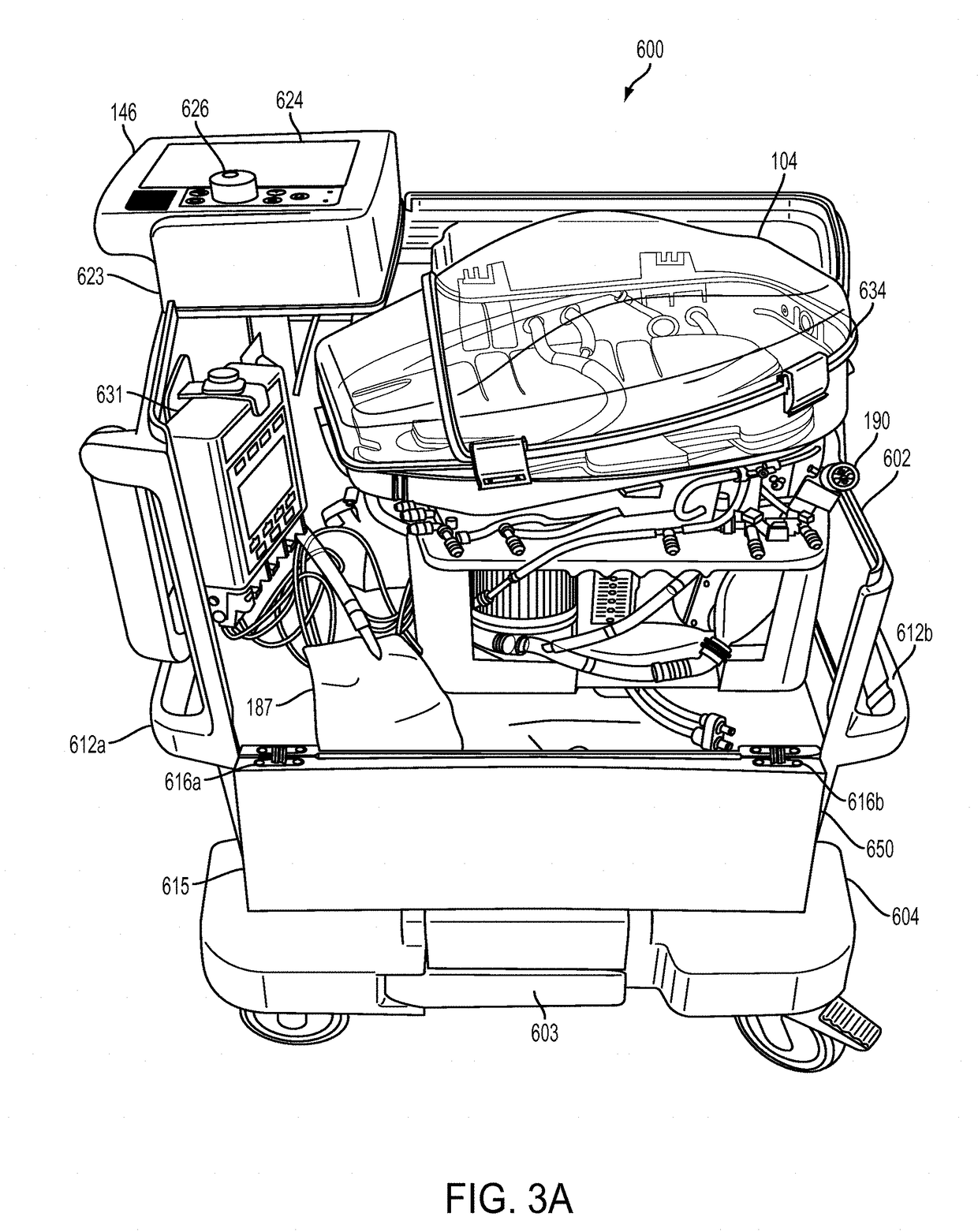Ex vivo organ care system
a technology of organ care and ex vivo, applied in the field of systems, methods, devices for ex vivo organ care, can solve the problems of liver challenges, dual blood supply expected by the liver challenges, and difficult challenges, and achieve the effect of accurately mimicking blood flow and simulating the human body's vascular complian
- Summary
- Abstract
- Description
- Claims
- Application Information
AI Technical Summary
Benefits of technology
Problems solved by technology
Method used
Image
Examples
Embodiment Construction
[0095]While the following description uses section headings, these are included only as a convenience to the reader. The section headings are not intended to be limiting or impose any restriction on the subject matter herein. For example, components described in one section of the description can be included in other sections additionally or alternatively. The embodiments disclosed herein are exemplary only and it is within the scope of the present disclosure that the disclosed embodiments and various features may be interchanged with one another.
I. INTRODUCTION
[0096]A. General Summary
[0097]Embodiments of the disclosed subject matter can provide techniques for maintaining a liver ex vivo, such as during a transplant procedure. The system can maintain a liver in conditions mimicking the human body. For example, the system can supply a blood substitute to an ex vivo liver in a manner that simulates the blood flow provided by the body. More specifically, the system can provide a flow o...
PUM
 Login to View More
Login to View More Abstract
Description
Claims
Application Information
 Login to View More
Login to View More - Generate Ideas
- Intellectual Property
- Life Sciences
- Materials
- Tech Scout
- Unparalleled Data Quality
- Higher Quality Content
- 60% Fewer Hallucinations
Browse by: Latest US Patents, China's latest patents, Technical Efficacy Thesaurus, Application Domain, Technology Topic, Popular Technical Reports.
© 2025 PatSnap. All rights reserved.Legal|Privacy policy|Modern Slavery Act Transparency Statement|Sitemap|About US| Contact US: help@patsnap.com



